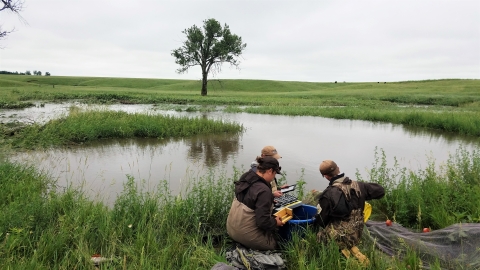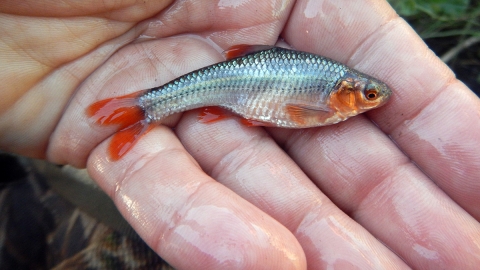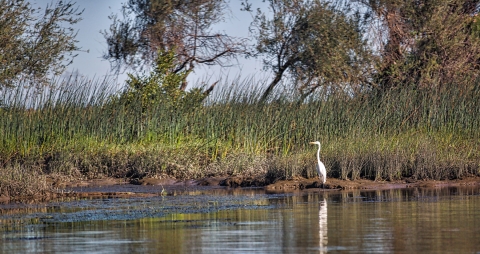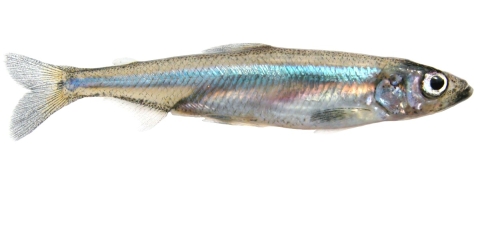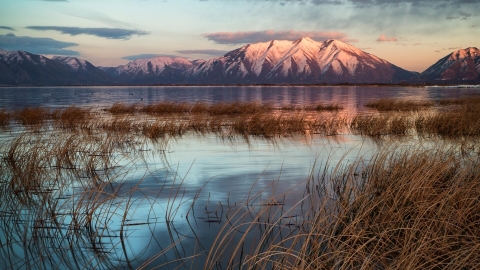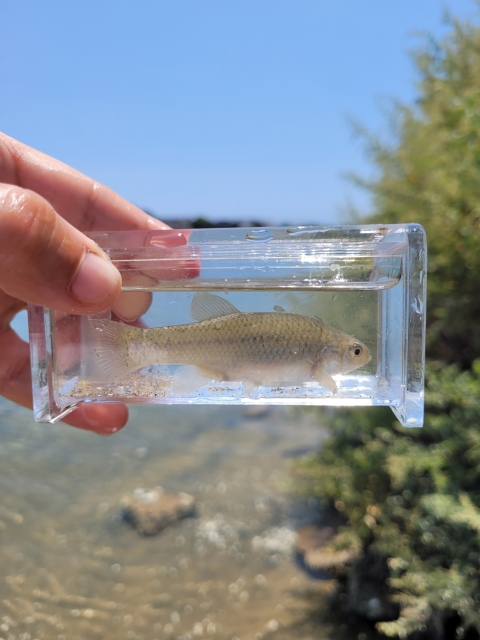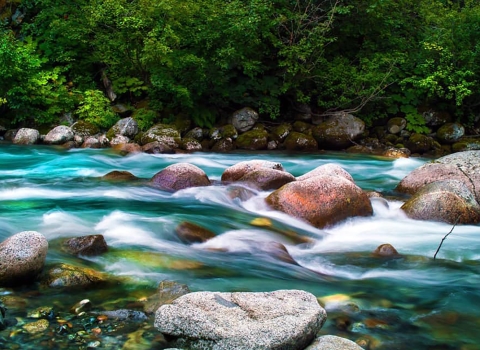It's the coolest!
What's the coolest?
Wetlands! You ain't cool unless you wet your plants (hydrophytes, specifically...the water-dwelling plants found in wetlands).
Wetlands and Fish
The amazing places we call wetlands have been compared to filters, kidneys and sponges. They protect coastal areas and sequester carbon. They take many forms. Many fish heavily on wetlands as sources of refuge and food, and safe places to spawn and grow.
Topeka Shiner and Oxbow Wetlands
Great Plains • Endangered
Allow a river to do its thing over the eons and it'll meander across the landscape with the sidewinding locomotion of a snake. If you could settle into a spot for years and watch a meandering river flow, you'd witness it carving away its outer banks and building up its inner curves. Eventually, it'll cut through the path of least resistance and leave sections of itself behind. These disconnected curves become oxbows lakes and wetlands. If you were to fly above, you'd see these U-shaped sections shimmering and rippling out across the floodplain as the river marches on, marking time and recording its course across the landscape.
Channelizing and straightening rivers to allow for agriculture or control natural flooding takes away their tendency to create oxbows. The Topeka Shiner, a small Endangered fish that relies on oxbows, has declined as their wetland habitat has disappeared.
Listen: From oxbows to farmers and a must-visit hatchery, the little Topeka Shiner has a big story to tell. Guests Roderick May from Neosho National Fish Hatchery in Missouri and Heidi Kueler from the La Crosse Fish and Wildlife Conservation Office in Wisconsin join the conversation.
Delta Smelt & Tidal wetlands
California Endemic • Threatened
The San Francisco Bay Delta estuary is where the Sacramento River and San Joaquin River meet San Francisco Bay. This place of mixing is the only place in the whole world where the Delta Smelt, a little silvery fish that smells like cucumbers, lives. Daily tidal and seasonal river flooding resulted in a constant ebb and flow that moved nutrients both ways, from the land and from the sea.
Listen: Whoever smelt the Delta Smelt dealt it...and it smells like cucumbers! Katrina and Guy talk with special guest Katherine Sun about this uniquely odoriferous California fish and its imperiled delta home:
June Sucker and Delta Wetlands
Utah Lake and the Provo River • Threatened
The "former greatest sucker lake in the universe" once saw a boat get stuck on a shoal of suckers.
If you're not a fish nerd you might not have any idea how cool suckers really are (they belong to a family of fishes found almost exclusively in North America that includes suckers, redhorses and buffalo). In a similar vein to the Topeka Shiners and Delta Smelt, human activities have transformed the hydrology of the delta habitat that these suckers need early in life to grow and avoid predators. A broad delta and floodplain including marshes, oxbows, and wet meadows once married the space between the lower Provo River and Utah Lake became confined to a narrow channel behind levees.
Listen: Head to the former "greatest sucker pond in the universe" where old timey ichthyologist David Starr Jordan once got his boat stuck on a shoal of suckers. Russ Franklin with the June Sucker Recovery Implementation Program and Chris Keleher from the Utah Division of Wildlife Resources are guests:
California Killifish and Salt Marshes
Natural saltmarshes are amazing places with super reticulate creeks or intertidal pools and other microhabitats that fish use during different times of their lives. Baby California Killifish, for example, tend to stick to the high marsh habitats (the small intertidal pools and creeks) with high salinities and temperatures to avoid the many predators (like birds and other fish) that love to eat them. As they age, they migrate with the tides, venturing out deeper into the vegetated salt marsh salt marsh
Salt marshes are found in tidal areas near the coast, where freshwater mixes with saltwater.
Learn more about salt marsh to feed. These homebodies seem to move very little between marshes.
Listen: Meet a serious player in the salt-marsh ecosystems of the Pacific coast! You'll find the California Killifish migrating with the tides and feeding everything from Least Terns to California Halibut. Drew Talley from the University of San Diego helps shed light on a small but hugely important fish and what it's teaching us about California's remaining coastal wetlands.
Explore More
Catch new episodes of our award-winning podcast Fish of the Week! every Monday. Read related Fish Tales here!
Learn more about our Wetlands Inventory
We honor, thank, and celebrate the whole community — individuals, Tribes, States, our sister agencies, fish enthusiasts, scientists, and others — who have elevated our understanding and love, as people and professionals, of all the fish.


